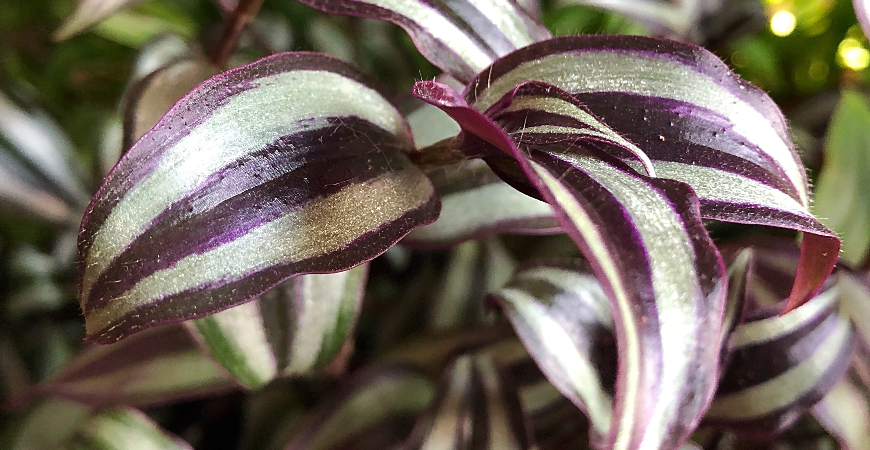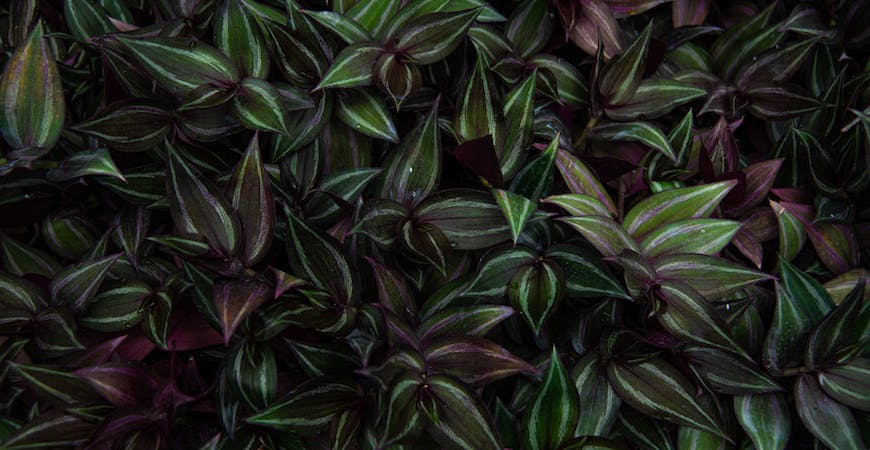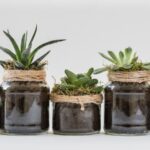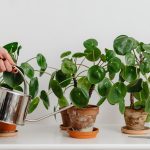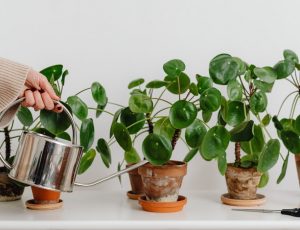
All About the Vibrant, Low-Maintenance Inch Plant
If you’re looking for an easy-to-care-for indoor plant, start small. The inch plant (known formally as the tradescantia zebrina) isn’t quite as diminutive as its name suggests, but its striped leaves and unpretentious needs make them a popular choice for indoor gardeners.
So, whether your new plant is for yourself or a friend, consider the inch plant!
Tradescantia Zebrina Basics
Before waxing poetic about their striking visage, we should note that inch plants go by a few names. We’ve already explored its more common and scientific names, but due to its creeping nature, it also goes by the “wandering dude.”
Inch plants are perennials in their native Mexico, but throughout the United States, you’ll find them in hanging pots. While their versatile nature means they can be grown outside, southern portions of the U.S. consider them an invasive species, meaning they shouldn’t be allowed unfettered growth if placed outside.
Visually, inch plants are known for their vibrant leaves with green and purple stripes. In fact, their scientific name shares the same root word as one of our favorite zoo animals, the zebra.
Their leaves are shaped like a lance, and they grow densely and quickly on trailing stems. Their rapid growth, easy maintenance, and appealing appearance make inch plants an ideal indoor plant for green thumbs, both new and experienced.
While we are referring to one specific variety throughout this piece, the zebrina, we should note that there are other tradescantia plants to choose from:
- Tradescantia pallida (“purple heart”) has a fuzzier texture and more purple foliage.
- Tradescantia fluminensis (“quicksilver”) has white-and-green striped leaves.
- Tradescantia nanouk (“bubblegum”) has sweet pink stripes.
Each of these varieties grows briskly and without much fuss. So, your preference here may be dictated solely by which color best suits your personal style.
How to Care for an Inch Plant
Again, inch plants don’t require doting care. Most care mistakes center around sunlight and watering, with both needs requiring a balanced approach.
Many indoor gardeners grow their inch plants in a hanging pot or basket. This helps show off the plant’s lush, leggy stems.
Make sure to use an all-purpose indoor potting mix, and keep the basket in an area with bright, indirect light. Too much direct light or complete darkness will end with a plant whose leafy stems look thin and limp.
Try to keep the plant in an area of your home without wide temperature variations. Typically, a room that stays between 55 and 75 degrees Fahrenheit is ideal.
When watering, the goal is depth but not frequency. That is, water deeply, but allow the soil to dry before watering again.
Waterlogged soil will result in root rot. If you’re concerned about the plant not getting enough water, even if the soil remains somewhat moist, consider misting the plant instead.
Over winter months, inch plants can handle even dryer conditions. When temperatures drop, the plants enter their resting phase and may not grow quite as quickly as they would in the spring and summer months.
When temperatures start to climb again, add fertilizer twice a month to aid growth. These plants grow swiftly, so if you’re happy with their growth rate, it’s okay to scale back your fertilizing.
Perhaps the most intensive care need inch plants have is pinching back their vine-like stems. Pinch back about one-quarter of the leggy stems every month or so to promote a fuller, thicker appearance.
Once spring arrives, you can pinch back even further. You can also move your inch plant outside to your patio, as long as the area is covered and protected from direct light. (Also, due to its invasive nature in some parts of the United States, make sure to keep the plant contained within its pot or basket.)
Common Inch Plant Concerns
Tradescantia plants tend not to suffer from major diseases or infestations. The two most significant concerns are aphids and root rot.
To protect your plant from aphids, keep an eye out for these small insects on stems and leaves. If you notice any, pinch off the affected stems and spray the plant with water.
To keep root rot at bay, don’t overwater your soil. It should be moist, not soggy, and if you’re running into issues, reduce your watering and switch to misting for a bit.
How to Propagate Tradescantia Plants
There comes a time in all inch plants’ lives when their leggy, lengthy stems will become overwhelming. This is not a time for despair; it’s a time for propagation.
Propagating inch plants is easy. Simply cut off a dozen or so stems and plant them in fresh potting soil cut-end first.
It’s essential to use fresh potting soil here. Old soil often contains salt build-up, which is detrimental to new plant growth.
While full-grown inch plants have a proven distaste for soggy soil, when you propagate them, make sure the soil is plenty moist, if not altogether soggy. The additional water aids root growth and will help stabilize the plant as it starts anew.
That means you can even place your cuttings into a glass of water that sits near a sunny window. You’ll be able to see the roots sprout, at which point you can re-pot them in a hanging basket with fresh soil.
Finally, if you’re looking to take the propagating path of least resistance, simply place your cuttings on top of moist soil. As long as the cut ends have direct contact with the soil, the cuttings will grow roots and establish themselves as new plants.
When propagating, give your new growth a little more water and light than you would normally. Ease back on both once the plant matures.
If the thought of growing a family of inch plants brings panic as you do daily dashes to your home improvement store for more hanging baskets, consider giving the cutting and propagated plants as gifts. Because they aren’t fussy, you should feel at ease passing them along to indoor garden novices as well as green thumb veterans.
Growing Inch Plants
Whether you call them inch plants, wandering dudes, or tradescantia zebrinas, there’s much to love about this low-maintenance, high-growth-rate plant. Consider them for yourself or as gifts, and you’ll be amazed by how easy it is to grow something so vibrant!


